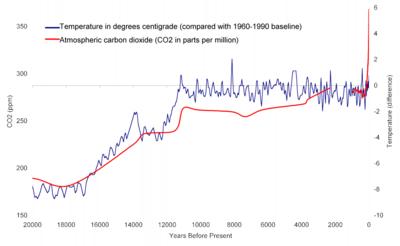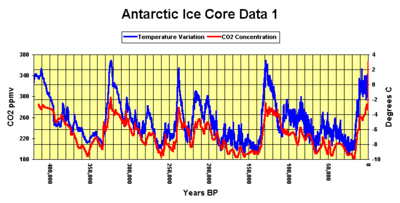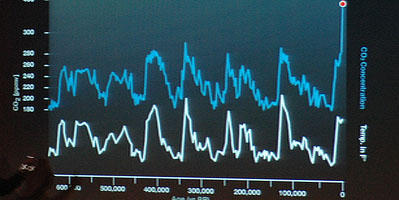A quick word on blocking ads

It looks like you are using an ad blocker. That's okay. Who doesn't? But without advertising revenue, we can't keep making this site awesome. Click the link below for instructions on disabling adblock.
Welcome to the Newschoolers forums! You may read the forums as a guest, however you must be a registered member to post. Register to become a member today!
^^^



YES!!!!!!
1. Most scientists do not believe human activities threaten to disrupt the Earth’s climate. More than 17,000 scientists have signed a petition circulated by the Oregon Institute of Science and Medicine saying, in part, “there is no convincing scientific evidence that human release of carbon dioxide, methane, or other greenhouse gases is causing or will, in the foreseeable future, cause catastrophic heating of the Earth’s atmosphere and disruption of the Earth’s climate.” (Go to www.oism.org for the complete petition and names of signers.) Surveys of climatologists show similar skepticism.
2. Our most reliable sources of temperature data show no global warming trend. Satellite readings of temperatures in the lower troposphere (an area scientists predict would immediately reflect any global warming) show no warming since readings began 23 years ago. These readings are accurate to within 0.01ºC, and are consistent with data from weather balloons. Only land-based temperature stations show a warming trend, and these stations do not cover the entire globe, are often contaminated by heat generated by nearby urban development, and are subject to human error.
3. Global climate computer models are too crude to predict future climate changes. All predictions of global warming are based on computer models, not historical data. In order to get their models to produce predictions that are close to their designers’ expectations, modelers resort to “flux adjustments” that can be 25 times larger than the effect of doubling carbon dioxide concentrations, the supposed trigger for global warming. Richard A. Kerr, a writer for Science, says “climate modelers have been ‘cheating’ for so long it’s almost become respectable.”
4. The IPCC did not prove that human activities are causing global warming. Alarmists frequently quote the executive summaries of reports from the Intergovernmental Panel on Climate Change (IPCC), a United Nations organization, to support their predictions. But here is what the IPCC’s latest report, Climate Change 2001, actually says about predicting the future climate: “The Earth’s atmosphere-ocean dynamics is chaotic: its evolution is sensitive to small perturbations in initial conditions. This sensitivity limits our ability to predict the detailed evolution of weather; inevitable errors and uncertainties in the starting conditions of a weather forecast amplify through the forecast. As well as uncertainty in initial conditions, such predictions are also degraded by errors and uncertainties in our ability to represent accurately the significant climate processes.”
5. A modest amount of global warming, should it occur, would be beneficial to the natural world and to human civilization. Temperatures during the Medieval Warm Period (roughly 800 to 1200 AD), which allowed the Vikings to settle presently inhospitable Greenland, were higher than even the worst-case scenario reported by the IPCC. The period from about 5000-3000 BC, known as the “climatic optimum,” was even warmer and marked “a time when mankind began to build its first civilizations,” observe James Plummer and Frances B. Smith in a study for Consumer Alert. “There is good reason to believe that a warmer climate would have a similar effect on the health and welfare of our own far more advanced and adaptable civilization today.”
6. Efforts to quickly reduce human greenhouse gas emissions would be costly and would not stop Earth’s climate from changing. Reducing U.S. carbon dioxide emissions to 7 percent below 1990’s levels by the year 2012--the target set by the Kyoto Protocol--would require higher energy taxes and regulations causing the nation to lose 2.4 million jobs and $300 billion in annual economic output. Average household income nationwide would fall by $2,700, and state tax revenues would decline by $93.1 billion due to less taxable earned income and sales, and lower property values. Full implementation of the Kyoto Protocol by all participating nations would reduce global temperature in the year 2100 by a mere 0.14 degrees Celsius.
7. Efforts by state governments to reduce greenhouse gas emissions are even more expensive and threaten to bust state budgets. After raising their spending with reckless abandon during the 1990s, states now face a cumulative projected deficit of more than $90 billion. Incredibly, most states nevertheless persist in backing unnecessary and expensive greenhouse gas reduction programs. New Jersey, for example, collects $358 million a year in utility taxes to fund greenhouse gas reduction programs. Such programs will have no impact on global greenhouse gas emissions. All they do is destroy jobs and waste money.
8. The best strategy to pursue is “no regrets.” The alternative to demands for immediate action to “stop global warming” is not to do nothing. The best strategy is to invest in atmospheric research now and in reducing emissions sometime in the future if the science becomes more compelling. In the meantime, investments should be made to reduce emissions only when such investments make economic sense in their own right.
This strategy is called “no regrets,” and it is roughly what the Bush administration has been doing. The U.S. spends more on global warming research each year than the entire rest of the world combined, and American businesses are leading the way in demonstrating new technologies for reducing and sequestering greenhouse gas emissions.
owned.